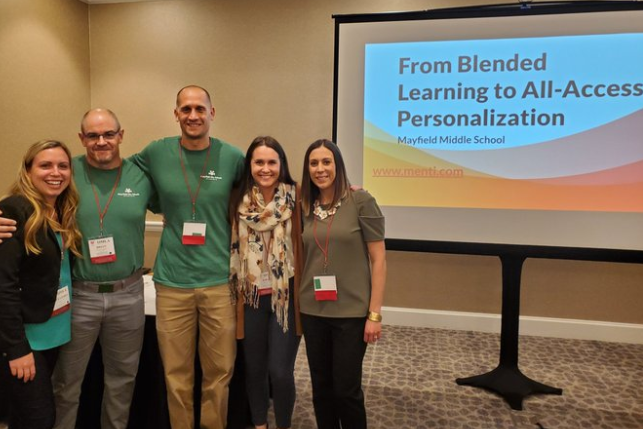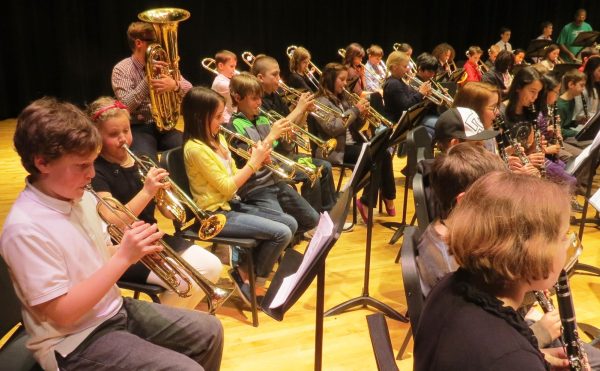Self-paced learning: What is it and how do people feel about it?
In recent years, through new technology advancements and with a greater push toward differentiating instruction to meet student needs, schools all around the country have been implementing self-paced learning in hopes of advancing the learning experience of its students.
The International Society for Technology in Education explained, “Self-paced learning differs from the traditional teacher-led, whole-class lessons in that it allows students to use materials and resources to customize the way they learn in class. The self-paced method allows students to design their own learning experience, not only at their own pace, but according to their own interests and learning preferences. The role of the instructor is to provide guidance, feedback on proficiency and tailor the learning environment to students’ needs.”
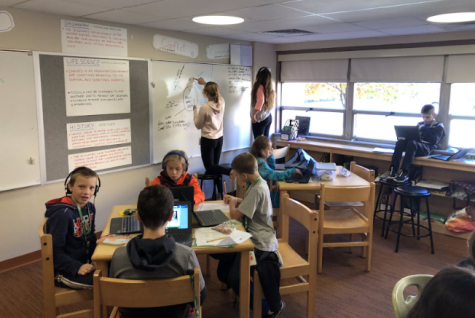
The structure of self-paced learning varies from teacher to teacher or from class to class. In a fully self-paced class, students can pre-test on the topic or skills at hand and only have to work on the topics they don’t know yet. They can do as much practice as they need for each topic and move through the lessons accordingly.
A learning structure like this has become easier and more common due to Learning Management Systems (LMS) that house assignments and course documents and even track turn-in progress.
Through technology, teachers can digitize content that once took time in the classroom to deliver. As an added benefit, it makes all content available whenever a student is ready for it.
However, like most things, there are still some roadblocks from this being an easy environment to achieve. For a lot of teachers, it is difficult to get the whole unit available upfront for students to work through. Also many teachers, for practical reasons, have to have the students stop at checkpoints–either to maintain order, to assess, or to ensure accountability. This may leave students without the ability to move as far ahead as they could. Or, in some cases, it may rush a student ahead before he or she is ready.
During an interview with eighth-grade social studies teacher Mrs. Streitman, she explained that for teachers, there is a lot of upfront work. But once the work is done and the materials are organized, it allows for more one-on-one work with students who need it. She also talked about the struggle of setting up lessons for students to do on their own and making sure they are still able to make their own discoveries about the topic.
An article on self-paced learning on the Cult of Pedagogy blog page discussed a method of self-paced learning that would involve students being able to work at their own pace and collaborate, but if students needed to be pulled back they would be in order to give them their best learning environment. It also talked about how students were given resources but didn’t have to use all of them if they understood the topic.
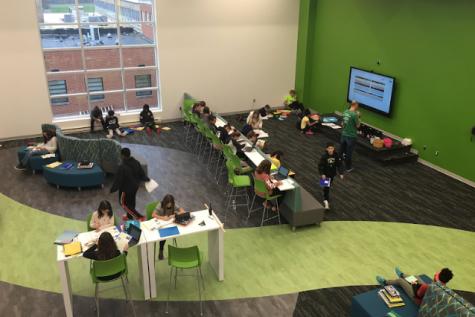
The ideal benefits of this instructional style would be that students work at their own pace and can get more accomplished. They would also, according to an article by ISTE, get more personalized feedback to better their learning and learn in the best way for them.
But not all students seem ready for self-paced, either because they lack time management skills or cannot resist the temptations of drifting off task. Teachers are tackling this problem by doing more modeling of goal setting and self-reflection. Teachers are showing students how to create to-do lists and set priorities.
In addition to concerns about students’ accountability when it comes to working by themselves, some also have a concern with screen time. According to an October 2019 CNN article, “US teens spend an average of more than seven hours per day on screen media for entertainment, and tweens spend nearly five hours, a new report finds — and that doesn’t include time spent using screens for school and homework.” Self-paced learning often involves course materials beings accessed electronically, and assessments are often taken and submitted online as well. With the numerous recent findings about the negative impact of screen time on mental health and ability to focus, some are worried that accessing digital content in school adds to an already problematic issue.
In certain areas, only minor improvements in grades were found when self-paced learning was used. Chicago teachers even wrote, “It isolates children, it breeds competition, it assumes children can learn entirely on their own, it dehumanizes the environment.”
Students across the middle school had mixed reviews. They reported that for the classes that are easier for them, they prefer to work by themselves, using the resources provided. However, for more difficult concepts or classes, students prefer to have more structure and teacher guidance.
For MMS students that were interviewed about their opinions of self-paced learning, there were only a handful that said they didn’t want teachers relying on self-paced learning in any classes. Students reported that they fall behind easier and that they don’t retain information as well.
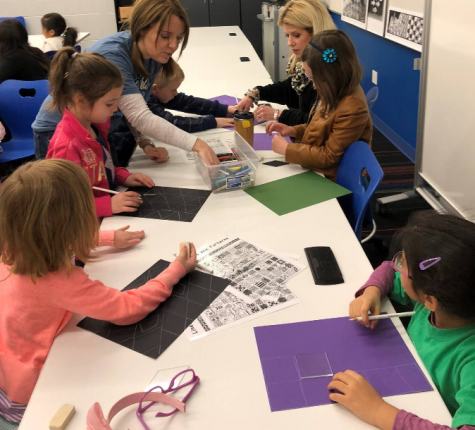
Aside from this handful of students, for all classes except math, the results were split in half between people wanting and not wanting self-paced learning. But overwhelmingly in math, a very concept-heavy class, students tended to not want the option to work on their own.
Even among students taking higher-level classes whom, some would think like independence more, the results were split.
Gifted intervention specialist, Mrs. Golem, talked about how no matter who the students are, the learning method that works best for them will always vary. She also mentioned that for this type of learning to be successful in the future, students may need to learn how to learn this way.
In some cases, it came down to the way the teacher facilitates the self-paced learning. Students tended to like models that included some direct instruction upfront as well as in small doses along the way. Students also liked self-paced better if they felt the teacher offered a lot of feedback and if they had a lot of chances to get help from classmates or the teacher. They liked choices but not checklists, shorter deadlines rather than long-terms ones that let them procrastinate too much, and the option for movement in the classroom.
While talking to Dr. Ward, the director of curriculum for Mayfield, he mentioned that self-paced learning is just one tool. He prefers the idea of “All-Access Learning”–learning that could be tailored to the student. The goal is personalization. He talked about how ideally in the future, not too far down the line, all classes would be All-Access learning environments that help students learn in the best method for them.
Dr. Ward also discussed the idea of a greater emphasis on teachers designing and building good lessons that could provide students with a higher quality of learning–learning that couldn’t just be googled for an answer. In the environments that have tried this improved learning method, he reported that grades have improved. Furthermore, he talked about over 50 other schools coming to Mayfield to learn about All-Access learning.
Among middle-schoolers, self-paced learning seems to be a split topic but like most things people are always trying to improve it and make it better for the future.


